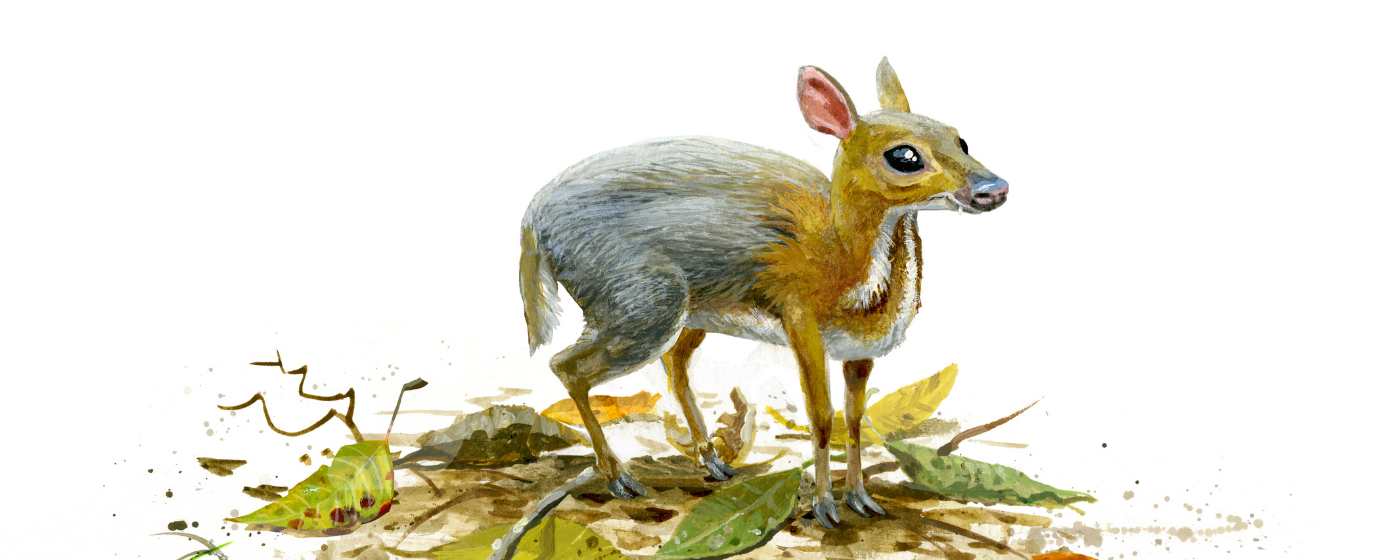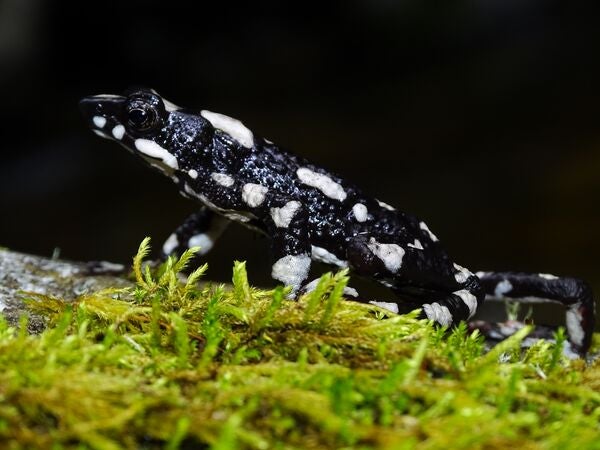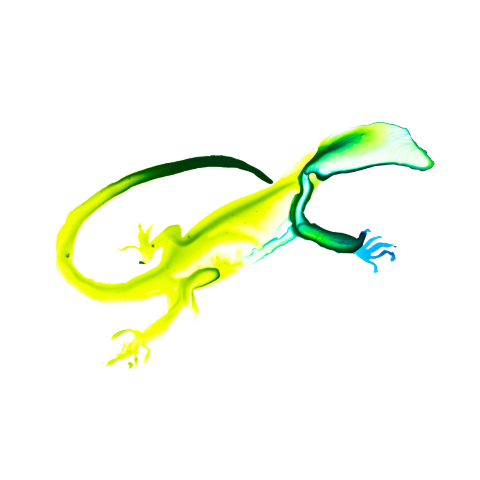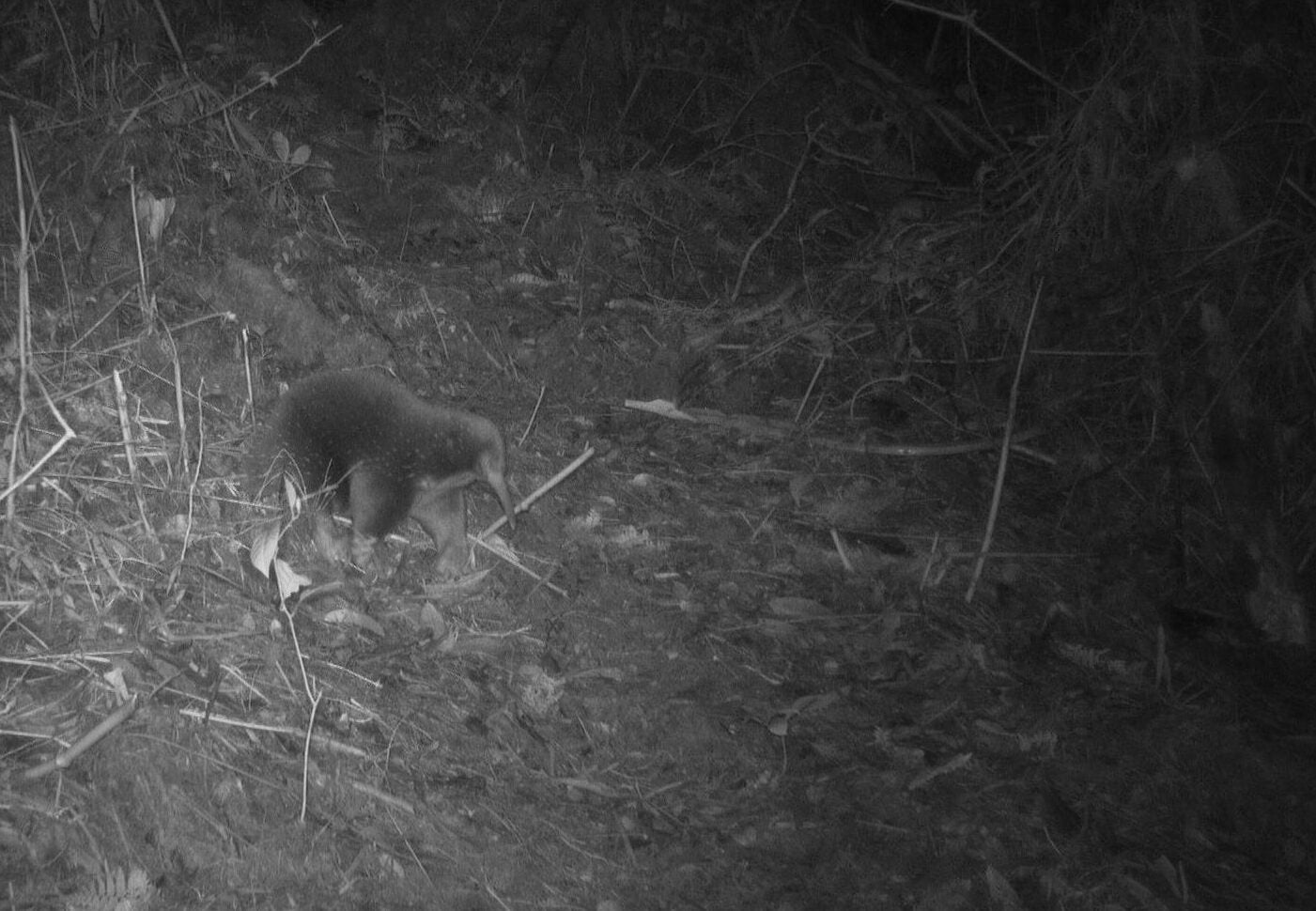Frequently Asked Questions
Lost Species
- What makes a species lost?
- How did these species become lost?
- What do you consider proof of a rediscovery?
- How do you select your priority lost species lists?
- How did you select your top "most wanted" lists by groups of species?
- How are lost legends different from other lost species?
- Is Re:wild really going out and looking for all of these species?
- Are you at all worried that announcing rediscoveries could put these species in more danger?
- What happens if you don't find one of Re:wild's Most Wanted Species during an expedition?
- After a species is rediscovered, then what?
- How can I learn about the outcome of an expedition?
- As you rediscover species on Re:wild's Most Wanted Lost Species list, will you replace those?
- Has any organization ever done anything like this before?
- How can I get involved?
What makes a species lost?
At a minimum, a species is considered lost if it has not had a scientific documentation for at least a decade and is not found anywhere in captivity (including in zoos, aquaria or breeding programs). It also cannot be listed as Extinct on the IUCN Red List of Threatened Species. In 2022, we formalized the language we use to talk about lost species with a published article in Oryx, ensuring there is an international standard that defines what constitutes a lost species.
How did these species become lost?
Species become lost for a variety of reasons. In some cases, species that once existed in healthy populations are now possibly extinct as the result of any number of threats, including emerging disease, habitat destruction, invasive species introduction, poaching and human-wildlife conflict. In some cases, scientists haven’t had access to the species because they are in hard-to-reach wilderness or conflict-ridden regions. And in some cases, these species were very rare to begin with, existing in small numbers in small geographical areas where a single disturbance could easily wipe out the entire population. In addition, some species are incredibly cryptic, either due to their behavior or life history.
What do you consider proof of a rediscovery?
While we may come across evidence that our top 25 most wanted lost
species are still out there in marketplaces selling animal parts, we will only
confirm the rediscovery of a species if scientists, naturalists or other
experts have verified—and have evidence—that it is still alive in the wild.
Ideally the scientists or naturalists would see the animal themselves and get
photo and video, or a photograph verified by DNA or eDNA evidence from the
rediscovery site, would suffice as proof of a rediscovery.
How do you select your priority lost species lists?
With 4,300 lost species to pick from, there is no shortage of options. We try to ensure that our most wanted list spans taxa, represents ecosystems across the planet, including land- and water-dwelling species, and includes some species that became lost recently and others that have been lost for many decades. We consider the likelihood of being able to get a team out to look for the species and whether protection of the species could benefit others that share its habitat.
Most importantly, our most wanted lost species serve as flagships for conservation and represent genuine opportunities for conservation action with local partners on the ground (or in the water, as the case may be).
How did you select your top "most wanted" lists by groups of species?
Our priority lists (such as the top 10 most wanted birds, the top 10 most wanted fishes, or the list of lost sharks) for groups of species include those species that have been lost to science for at least a decade (and often for much longer!) and, like our broader most wanted lost species list, may be lost for a variety of reasons. Some of our taxa-specific lists were developed with various IUCN Species Survival Commission specialist groups and other partners. In some cases, biologists may be actively out searching—or interested in going out to search—for these species. In other cases, these stories represent the kinds of compelling stories that can help raise their group’s public profile, even if nobody is out actively looking. They represent a broad geographical reach and may present opportunities for inspiring conservation action.
A number of initiatives have developed over the years under the Search for Lost Species with coalitions of partners, including:
The Search for Lost Birds, a collaboration with American Bird Conservancy and BirdLife International
The Search for Lost Fishes, in partnership with Shoal
The Search for Lost Sharks, in partnership with Beneath The Waves, Minorities in Shark Sciences (MISS), Mission Blue, PADI (the Professional Association of Diving Instructors) AWARE, ReShark and Save our Seas Foundation
We’ll be adding new lists, including by geography, so be sure to stay tuned!
How are lost legends different from other lost species?
Our lost legends are those that are, in all likelihood, Extinct (and are often declared as such on the IUCN Red List of Threatened Species) and are considered long-shots for rediscovery, but they live on in our collective imagination. Think Tasmanian Tiger and Ivory-billed Woodpecker—species that we hear about every few years when rumors of sightings make the headlines. Unlike the legends list, Re:wild's most wanted lost species list doesn’t include any species that have been classified Extinct by the IUCN Red List of Threatened Species.
Is Re:wild really going out and looking for all of these species?
At Re:wild, we don’t do anything on our own. We have a local partner-based model and we support local and international organizations and conservationists in their efforts to search for lost species. We are working with teams and individuals around the world to find and protect lost species and to publicize their stories of rediscovery and adventure as part of this shared campaign of hope and celebration.
And with thousands of species lost to science, it's no wonder that other conservation organizations, researchers, naturalists and even citizen scientists have rediscovered lost species. If you are a citizen scientist and think you may have seen a lost species, share it on iNaturalist.
Are you at all worried that announcing rediscoveries could put these species in more danger?
Our goal with the Search for Lost Species is to elevate our Re:wild's wanted lost species to flagships for conservation to catalyze action on the ground with local partners. The only way for those species to become flagships, however, is if we tell their stories and reveal to the world that they do, indeed, still exist. That said, we try to be as strategic as possible with these announcements to ensure that we reduce all risk to the species. Sometimes we might hold off on an announcement until strong protections for the species can be put in place. Sometimes we’ll use these announcements themselves to encourage protection at various levels of government in the species’ native country or to argue for stronger trade policy. And we never reveal the exact locations where these animals are rediscovered.
What happens if you don't find one of Re:wild's Most Wanted Species during an expedition?
We don’t expect to find these species on the first try and know that it will usually take multiple searches (these are lost species for a reason, after all!). Sometimes we start with local interviews, then searches, then place camera traps, then try to collect eDNA as we refine our methods, and our knowledge grows.
As we embark on these expeditions, we also learn about the habitats these species once called home and look for conservation opportunities even if we discover that the most wanted lost species is no longer there. Re:wild's most wanted lost species list represents only a fraction of the more than 2,200 species that scientists and conservationists from around the world nominated, and for now, are the targets of our continued fundraising efforts. In some cases, the species share habitat with other lost species, so we look for those animals or plants, too. For some of our target species, we support additional expeditions, while for others we rely on partners to continue the search in different areas.
After a species is rediscovered, then what?
First, we celebrate. Then we get to work with local and international partners to help catalyze conservation action for the species, including developing the best conservation strategies for the species, its habitat, and the species it shares its home with. This could mean our partners working with communities to protect it, establishing a new protected area when appropriate, understanding how a species has survived and applying that knowledge to help other species, working with local governments to enact laws that protect species, etc. The conservation strategy depends on the natural history of the species, its habitat and the threats causing it harm.
How can I learn about the outcome of an expedition?
The easiest way to learn about all new things lost species is to sign up for our newsletter and follow us on Facebook, Twitter and Instagram.
As you rediscover species on Re:wild's Most Wanted Lost Species list, will you replace those?
We will! And we have! As we rotate rediscovered species off the list, we’ll replace those with new most wanted lost species. You can find all of the rediscovered species from Re:wild’s most wanted lost species list here —scientists and conservationists from around the world have identified more than 4,300 lost species and counting. The new additions always follow the same criteria —span taxa, represent various ecosystems, have cultural or scientific value, represent opportunities for conservation action, and have an interesting story for us to tell.
Has any organization ever done anything like this before?
In 2010, our conservation scientists launched a global Search for Lost Frogs, a joint Re:wild partnership with Conservation International. Re:wild Vice President of Communications and Marketing Dr. Robin Moore, then at Conservation International, was leading the team, which included others at Re:wild. The project was supported by various sources such as the US Fish & Wildlife Service, and Re:wild scientists participated in expeditions. The team developed a list of lost amphibians that developed into an entire campaign that involved sending groups of scientists out into various habitats around the world to try to find the “most wanted” frog species. We’re replicating the success of that project across taxa in the Search for Lost Species. Other groups, such as American Bird Conservancy and BirdLife International, have ongoing expeditions to look for specific lost bird species, but no other organization has launched an initiative to look for this many lost species across taxa throughout such a wide geographical range of ecosystems.
How can I get involved?
There are lots of ways to get involved! We welcome donations to send these expeditions in search of lost species, but there are so many other ways for you to get involved. Get out in the field on your own quest and report an observation on our Lost Species iNaturalist page. Download our full list of 4,300 lost species and let us know if you have any additions or changes. We also work with artists who want to lend their skills to capture the beauty of our world’s lost species. Follow the search on Facebook, Twitter and Instagram and then share our stories. And be sure to sign up for our newsletter for all the latest on lost species and more!
Explore More About Lost Species
Continue your journey to learn how lost species are found, why they disappear, and the full scope of our search efforts.



